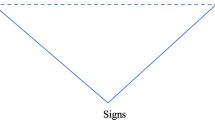Abstract
The phrase “the two cultures debate” has a particular connotation in the British context. It was prompted by a lecture given in the 1950s by the novelist C.P. Snow. Snow’s first career had been in science, and he drew on his inside knowledge of that domain in a sequence of novels, known collectively as Strangers and Brothers, where he contrasted it with that of the arts and humanities. Attempts have been made to revive the two cultures debate on the grounds that it speaks freshly to the problems we currently face and helps to account for the repression of the humanities. My discussion will align the two cultures debate with other perhaps similar constructions of internal cultural conflict, including some reference to Korean Confucianism and Sirhak (sometimes described as pragmatism). It will, however, take issue with recent attempts to revive Snow’s categories, suggesting that this is a misidentification of the nature of the contemporary threat to the humanities. It will try to show where that threat comes from and how, through education, it might be resisted. This will involve reappraising the importance of works of art in understanding the place of technology in the development of the human. Education in the humanities requires no less.
Similar content being viewed by others
Notes
The terms “arts” and “humanities” tend to be used loosely and interchangeably, as they will be in my discussion, though I shall later on consider the particular implications of the focus on the “human”.
See: http://www.koreatimes.co.kr/www/news/include/print.asp?newsIdx=31957. Accessed on 10 November 2013.
See: http://news.cincinnati.com/article/20131024/ENT07/310240033/Nam-June-Paik-s-Metrobot-coming-out-of-storage?nclick_check=1. Accessed on 3 November 2013.
See: http://www.paikstudios.com/gallery/1.html. Accessed on 3 November 2013.
References
Arnold, M. (1983) Literature and science. Online at: http://homes.chass.utoronto.ca/~ian/arnold.htm (Accessed on 7 Oct 2012).
Furedi, F., Kimball, R., Tallis, R., and Whelan, R. (2009) From Two Cultures to No Culture: C.P. Snow’s “Two Cultures” Lecture Fifty years On (London, Civitas).
Whelan, R. (2009) Introduction: Any culture at all would be nice, In: F. Furedi et al. From two cultures to no culture: C.P. Snow’s “Two Cultures” Lecture Fifty years On, pp. 1–30.
Author information
Authors and Affiliations
Corresponding author
Rights and permissions
About this article
Cite this article
Standish, P. The idea of two cultures. Asia Pacific Educ. Rev. 15, 71–77 (2014). https://doi.org/10.1007/s12564-013-9299-0
Published:
Issue Date:
DOI: https://doi.org/10.1007/s12564-013-9299-0




